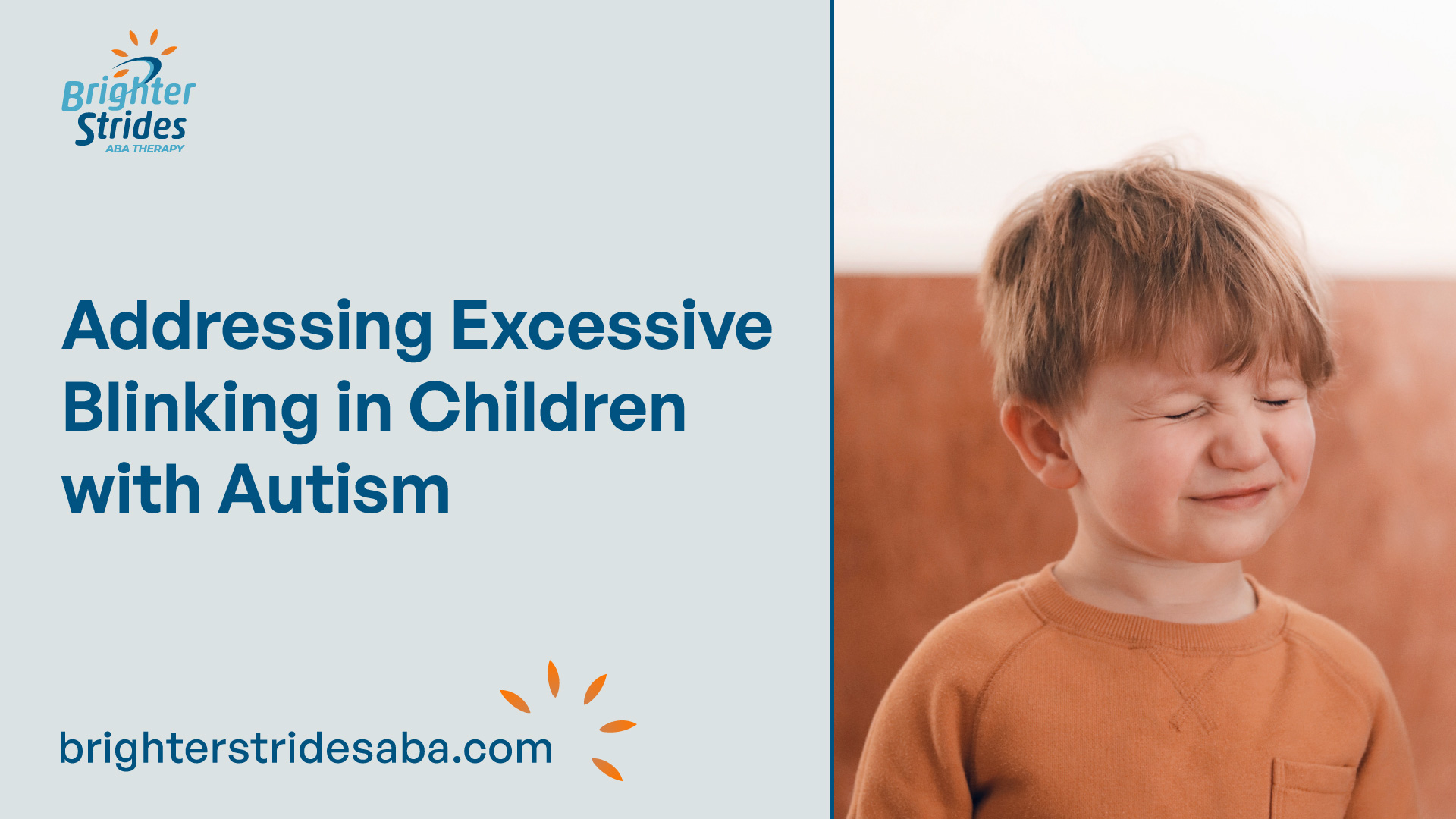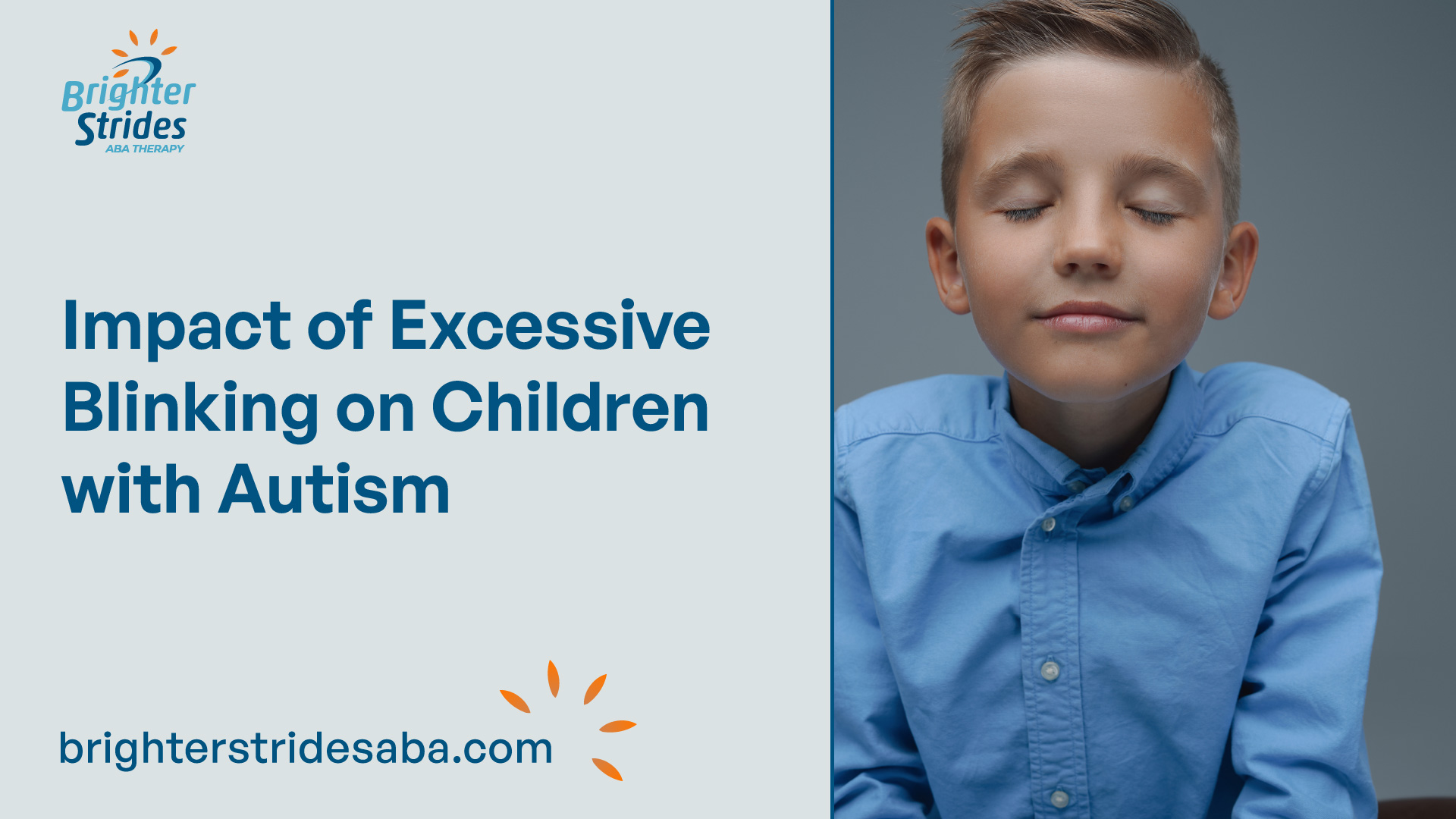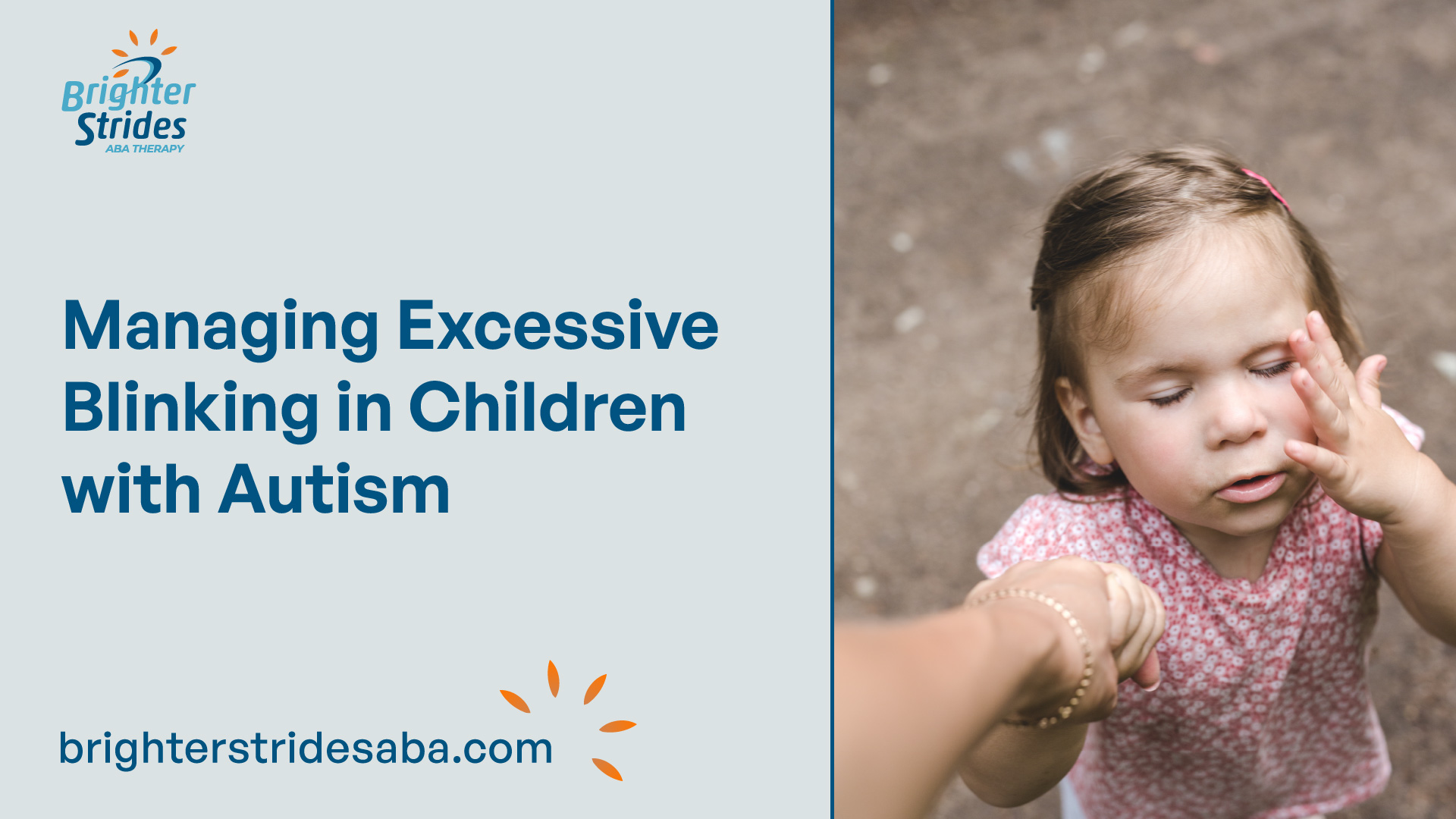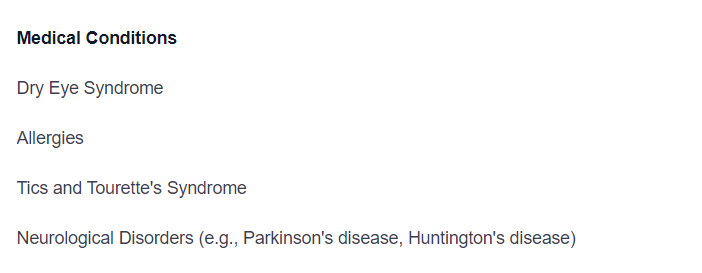
Understanding Excessive Blinking in Children with Autism
Excessive Blinking is a behavior that has been observed in children with autism. It can be classified as a motor stereotype, which refers to repetitive movements that do not serve an obvious purpose and are performed in a similar or the same manner each time. This behavior is characterized by an increased frequency of blinking, either in one eye or both eyes.
What is Excessive Blinking?
Excessive Blinking, also known as eyelid fluttering or eye blinking tic, involves frequent and repetitive movements of the eyelids.
While blinking is a natural and necessary function to keep the eyes lubricated and protected, excessive blinking goes beyond the normal range of blinking frequency.
Excessive Blinking in Children with Autism
Excessive blinking is a common trait observed in children with autism. It can manifest as voluntary or involuntary blinking and may vary in intensity and duration. For some children with autism, excessive blinking may serve as a way to self-regulate and provide sensory input to calm and soothe themselves. The repetitive motion of blinking may help them focus their attention or manage overwhelming sensory experiences.
In other cases, excessive blinking in children with autism may be related to anxiety. It can serve as a coping mechanism to distract themselves from anxious thoughts or feelings. The act of blinking repetitively may provide a temporary sense of relief or control in challenging situations.
Understanding the underlying causes and factors contributing to excessive blinking in children with autism is crucial in effectively managing this behavior. By addressing the root causes and providing appropriate support, parents and caregivers can help children with autism navigate their daily lives with greater ease and comfort.
Causes and Factors Contributing to Excessive Blinking
Excessive blinking in children with autism can be attributed to various causes and factors. Understanding these underlying factors can provide valuable insights into why excessive blinking occurs and help in developing effective strategies for managing it.
Sensory Processing Difficulties
One of the contributing factors to excessive blinking in children with autism is sensory processing difficulties. Children with autism often have atypical sensory responses, including hypersensitivity or hyposensitivity to sensory stimuli, such as visual stimuli. Excessive blinking might be a way for children with autism to self-regulate and provide sensory input that helps them calm and soothe themselves.
The repetitive motion of blinking may serve as a coping mechanism for children with autism, helping them manage sensory overload or seek sensory stimulation. By engaging in excessive blinking, they may regulate their sensory experiences and find a sense of comfort in the familiar motion.
Anxiety and Stress
Anxiety and Stress are common challenges experienced by children with autism. Excessive blinking in children with autism can also be related to anxiety, as blinking may serve as a coping mechanism to distract themselves from anxious thoughts or feelings. Anxiety can arise from various sources such as social situations, sensory overload, or difficulties with communication and social interactions.
The repetitive action of blinking may provide a temporary distraction or a self-soothing mechanism for children with autism, helping them regulate their emotions in anxiety-provoking situations. It may serve as a way to redirect their focus or provide a sense of control amidst overwhelming feelings.
Understanding the causes and factors contributing to excessive blinking in children with autism is crucial in addressing and managing this behavior effectively. By recognizing the role of sensory processing difficulties and anxiety, parents and caregivers can implement strategies that support sensory regulation and provide tools for anxiety management. Through a tailored approach, it is possible to help children with autism navigate their experiences and promote their overall well-being.

Impact of Excessive Blinking on Children with Autism
Excessive blinking in children with autism can have a significant impact on their social interactions and daily activities. Understanding these impacts is crucial in providing appropriate support and intervention for children with autism who experience excessive blinking.
Social Interactions and Communication
Excessive blinking can hinder social interactions for children with autism. It may cause them to avoid eye contact, which is an important aspect of nonverbal communication. Eye contact plays a vital role in establishing and maintaining connections with others. It allows individuals to convey emotions, engage in reciprocal communication, and foster social bonds.
When excessive blinking leads to avoiding eye contact, children with autism may find it challenging to develop social skills and form meaningful relationships with their peers. The inability to establish and maintain eye contact can impede their ability to interpret social cues and accurately understand others’ emotions and intentions. Consequently, this can limit their social interactions and hinder their overall social development.
Challenges in Daily Activities
Excessive blinking can also pose challenges in daily activities for children with autism. Tasks that require visual attention and focus, such as reading, writing, and participating in group activities, may become more difficult. Excessive blinking can disrupt concentration and make it challenging for children to fully engage in these activities.
In educational settings, excessive blinking may interfere with the child’s ability to participate in classroom discussions, follow instructions, and complete assignments. It may also impact their involvement in group activities or collaborations with peers.
Additionally, excessive blinking can lead to feelings of self-consciousness and frustration for children with autism. They may become aware of their blinking behavior and experience increased anxiety or stress. This can further impact their overall well-being and ability to navigate daily activities effectively.
To support children with autism who experience excessive blinking, it is important to consider these impacts on social interactions and daily activities. By understanding the challenges they face, tailored strategies and interventions can be implemented to help them overcome these difficulties and promote their overall development and well-being.

Managing Excessive Blinking in Children with Autism
When it comes to managing excessive blinking in children with autism, there are various strategies that can be employed to help reduce the frequency of blinking episodes. Two effective approaches include creating a sensory-friendly environment and utilizing positive reinforcement and visual aids.
Creating a Sensory-Friendly Environment
Children with autism often experience difficulties with sensory processing, which can contribute to excessive blinking. Creating a sensory-friendly environment can help minimize sensory overload and provide a calming atmosphere for the child. Here are some strategies to consider:
- Reduce sensory triggers: Identify and minimize environmental factors that may contribute to sensory overload, such as bright lights, loud noises, or strong smells. Use curtains, earplugs, or headphones to control the level of sensory input.
- Provide a safe space: Designate a quiet area where the child can retreat when feeling overwhelmed. This space should be comfortable and equipped with sensory tools like weighted blankets, fidget toys, or soft lighting.
- Establish routines: Stick to predictable daily routines and schedules to provide a sense of structure and security. Visual schedules and social stories can help the child understand and anticipate upcoming activities or transitions.
Positive Reinforcement and Visual Aids
Using positive reinforcement and visual aids can be effective in managing excessive blinking in children with autism. Here’s how these strategies can be implemented:
- Positive reinforcement: Encourage alternative self-regulating behaviors by providing positive reinforcement for desired behaviors. This can be in the form of verbal praise, rewards, or tokens. For example, if the child engages in a self-soothing behavior instead of excessive blinking, acknowledge and reward their efforts.
- Visual aids: Visual schedules and social stories can help children with autism understand expectations and routines. Use visual aids to illustrate the steps involved in various activities or tasks. These visual supports can enhance communication, reduce anxiety, and provide a clear understanding of what is expected.
By creating a sensory-friendly environment and incorporating positive reinforcement and visual aids, parents and caregivers can help manage excessive blinking in children with autism. It is important to work closely with healthcare professionals, such as behavioral therapists or occupational therapists, who can provide additional guidance and support tailored to the child’s individual needs. Remember, every child is unique, so it may take some trial and error to find the strategies that work best for your child.
Medical Conditions and Excessive Blinking
Excessive blinking in children with autism can sometimes be a symptom of an underlying medical condition. While it is important to remember that not all cases of excessive blinking are related to a medical condition, being aware of potential underlying factors is crucial. Here, we explore some of the possible medical conditions associated with excessive blinking in children with autism and when it may be necessary to seek medical attention.
Underlying Medical Conditions
Excessive blinking in children with autism may, in some cases, be linked to the following underlying medical conditions:

It is essential to note that excessive blinking alone does not necessarily indicate the presence of these medical conditions. However, if excessive blinking is accompanied by other symptoms such as redness or swelling of the eyes, it is important to consult a healthcare professional for further evaluation and diagnosis.
When to Seek Medical Attention
While occasional blinking is a normal part of eye function, persistent and excessive blinking in children with autism may warrant medical attention. It is advisable to consult a healthcare professional if:
- Excessive blinking is accompanied by other concerning symptoms such as eye redness, eye swelling, or eye pain.
- The excessive blinking significantly interferes with the child’s daily activities, social interactions, or communication.
- The excessive blinking is causing distress or discomfort to the child.
If any of these situations arise, it is important to seek medical attention promptly. A healthcare professional can conduct a thorough evaluation, consider the child’s medical history, assess symptoms, and determine the appropriate course of action.
Remember, each child is unique, and the underlying cause of excessive blinking may vary. It is crucial to work closely with healthcare professionals, including pediatricians, ophthalmologists, and developmental specialists, to ensure a comprehensive evaluation and appropriate management of excessive blinking in children with autism.
References
- https://meta.stackexchange.com/questions/189920/what-is-the-3-x-backquote-markdown-used-for
- https://docs.github.com/en/get-started/writing-on-github/working-with-advanced-formatting/creating-and-highlighting-code-blocks
- https://www.abtaba.com/blog/excessive-blinking/
- https://www.apexaba.com/blog/excessive-blinking-in-children-with-autism
- https://www.apexaba.com/blog/excessive-blinking-in-children-with-autism/
- https://www.goldenstepsaba.com/resources/excessive-blinking-and-autism
- https://www.crossrivertherapy.com/autism/blinking

 We've just released an article!
Check out our blog!
We've just released an article!
Check out our blog!



